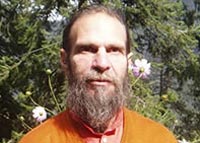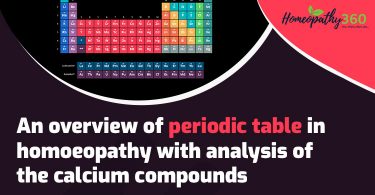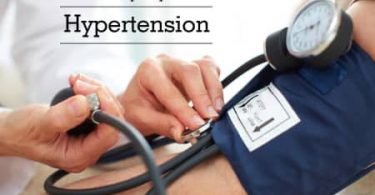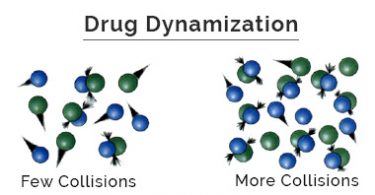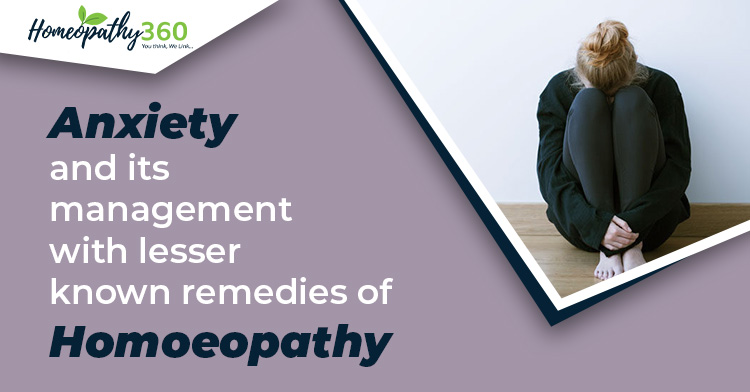
ABSTRACT: Anxiety is the reaction of mind and body to stressful, dangerous, or unfamiliar situations. It is the sense of uneasiness, distress, or dread you feel before a significant event. Anxiety Disorders are the most prevalent of psychiatric morbidities and are the sixth leading cause of disability worldwide with 4% of all YLD (years lived with disability), more commonly seen in females than males. This article deals with an overview of Anxiety, focusing upon its various aspects along with Homoeopathic management.
KEYWORDS: Anxiety, Homoeopathy.
ABBREVIATIONS: YLD (years lived with disability), hypothalamic-pituitary-adrenal (HPA), corticostriatal-thalamocortical (CSTC), example (e.g.).
INTRODUCTION:
These are characterised by the emotion of anxiety, worrisome studies, avoidance behaviours and the physical symptoms of autonomic thrill. Anxiety diseases are divided into three main subtypes phobic, panic, and generalised. The nature and elevation of the physical symptoms frequently lead the case to present originally to medical services. Anxiety may be stress-related and phobic anxiety may follow an unwelcome incident.1
CLINICAL FEATURES:2
- Phobic anxiety disorder– Recurring, illogical fears of specific objects, conditioning, or situations, with posterior avoidance geste of the phobic encouragement. Opinion is made only when the avoidance geste interferes with social or occupational functioning. Common phobias include fear of unrestricted places (claustrophobia), fear of blood and fear of flying. Social phobia is distinguished by a specific fear of social or performance situations in which the existent is exposed to strange individualities or to possible examination and evaluation by others.
- Panic anxiety disorder– Characterised by fear attacks, which are unforeseen, unanticipated, inviting paroxysms of terror and apprehension with multiple associated physical symptoms. Attacks generally reach a peak within 10 minutes, also sluggishly resolve spontaneously. Attacks are accompanied by pulsations, sweating, pulsing, dyspnoea, casket pain, dizziness, and a fear of brewing doom or death. When the complaint goes uncelebrated and undressed, patients frequently witness significant morbidity, they come hysterical of leaving home and may develop anticipant anxiety, agoraphobia, and other spreading phobias.
- Generalised anxiety disorder– They witness persistent, inordinate, and/ or unrealistic solicitude associated with muscle pressure, bloodied attention, autonomic thrill, feeling “on edge” or restless, and wakefulness. Patients worry exorbitantly over minor matters, with life- dismembering goods; unlike fear complaint, complaints of briefness of breath, pulsations, and tachycardia are fairly rare.
AETIOLOGY:3
BIOLOGICAL CAUSE:
- GENETIC INFLUENCES- While genetics have been known to contribute to the donation of anxiety symptoms, the relations between genetics and stressful environmental influences accounts for further of anxiety diseases than genetics alone (Bienvenu, Davydow, and Kendler, 2011). The hunt to identify specific genes that may dispose individualities to develop anxiety diseases has supereminent experimenters to the serotonin transporter gene (5-HTTLPR). Mutation of the 5-HTTLPR gene has been plant to be related to a reduction in serotonin exertion and an increase in anxiety- related personality traits (Munafo, Brown, and Hairiri, 2008).
- NEUROBIOLOGICAL STRUCTURES- When presented with a fearful situation, the amygdala initiates a response in sweats to prepare the body for a response. First, the amygdala triggers the hypothalamic-pituitary-adrenal (HPA) axis for immediate action — either fight or flight. The alternate pathway is actuated by the stressed encouragement itself, by transferring a sensitive signal to the hippocampus and prefrontal cortex, to determine if the trouble is real or imagined. However, the amygdala sends a comforting response to the HPA axis, therefore reducing the position of fear, If it’s determined that no trouble is present. However, the amygdala is actuated, producing a fear response, If there’s a trouble present. Specific to panic disorder is the recrimination of the locus coeruleus, the brain structure that serves as an “on-off” switch for norepinephrine neurotransmitters. It’s believed that increased activation of the locus coeruleus results in fear like symptoms; thus, individualities with panic disorder may have a hyperactive locus coeruleus, leaving them more susceptible to experience more violent and frequent physiological thrill than the general public (Gorman, Kent, Sullivan, and Coplan, 2000). More specifically, the corticostriatal-thalamocortical (CSTC) circuit, also known as the fear-specific circuit, is theorized as a major contributor to fear symptoms (Gutman, Gorman, and Hirsch, 2004). When an existent is presented with a shocking object or situation, the amygdala is actuated, transferring a fear response to the anterior cingulate cortex and the orbitofrontal cortex. Fresh protuberance from the amygdala to the hypothalamus activates endocrinologic responses to fear- releasing adrenaline and cortisol to help prepare the body to fight or flight (Gutman, Gorman, and Hirsch, 2004). This complex pathway supports the proposition that fear complaint is intermediated by several neuroanatomical structures and their associated neurotransmitters.
PSYCHOLOGICAL CAUSES:
- COGNITIVE- The cognitive perspective on the development of anxiety diseases centres around dysfunctional study patterns. Maladaptive hypotheticals are routinely observed in individualities with anxiety diseases, as they frequently interpret events as dangerous and overreact to potentially stressful events, which contributes to a heightened overall anxiety position. These individualities might had further trauma- related gests in the history, and thus, are quick to misevaluate their physical symptoms that lead to misconstructions to physiological thrill. Social anxiety is also explained by cognitive proponents. Individualities with social anxiety complaint tend to hold unattainable or extremely high social beliefs and prospects they frequently engage in preconceived maladaptive hypotheticals that their actions lead to terrible consequences. Because of these beliefs, they anticipate social disasters will do and thus, avoid social hassles (or limit them to close musketeers/ family members) in sweats to help the disaster (Moscovitch etal., 2013). Individualities with social anxiety complaint will also estimate the social event after it has taken place, frequently obsessively reviewing the details. This over-evaluation negatively reinforces unborn avoidance of social situations.
- BEHAVIOURAL- Specifically, behavioural proponents concentrate on classical exertion – when two events that do close together come explosively associated with one another, despite their lack of unproductive relationship. Little Albert trial is an example of how classical exertion can be used to induce fear through associations. In this study, Little Albert developed a fear of white rats by pairing a white rate with a loud sound. This trial, although lacking ethical norms, was base breaking in the development of learned behaviours
- MODELLING- In modelling, an individual acquires a far through observation and reproduction (Bandura and Rosenthal, 1966). For illustration, when a youthful child observes their parent display illogical fears of a beast, the child may also begin to display analogous behaviours. Also, observing another existent being scouted in a social setting may increase the chances of the development of social anxiety, as the existent may come fearful that they would witness an analogous situation in the future. It’s suspected that the conservation of these phobias is due to the avoidance of the stressed item or social setting.
SOCIO-CULTURAL CAUSES:
While characteristics similar as living in poverty, passing significant diurnal stressors, and increased exposure to traumatic events are all linked as major contributors to anxiety diseases, fresh sociocultural influences similar as gender demarcation have also entered a great deal of attention. women are routinely diagnosed with anxiety diseases more frequently than men, a trend that’s observed throughout the entire lifetime. One implicit explanation for this distinction is the influence of social pressures on women. Women are more susceptible to experience traumatic gests throughout their life, which may contribute to anxious appraisals of unborn events. These factors may increase situations of stress hormones (e.g., cortisol) within women that leave them susceptible to develop symptoms of anxiety. Thus, it appears a combination of inheritable, environmental, and social factors may explain why women tend to be diagnosed with anxiety diseases more frequently than men.
DIAGNOSIS GUIDELINES:4
| Phobic anxiety disorder All of the following should be fulfilled for a definite opinion: the cerebral or autonomic symptoms must be primary instantiations of anxiety, and not secondary to other symptoms similar as vision or compulsive study. the anxiety must be confined to the presence of the particular phobic object or situation. the phobic situation should be avoided whenever possible. Includes- acrophobia, beast phobias, claustrophobia, examination phobia, simple phobia. | Panic anxiety disorder For a definite opinion, several severe attacks of autonomic anxiety should have passed within a period of about 1 month. (a) in circumstances where there’s no objective peril. (b)without being confined to known situations. (c) with relative freedom from anxiety symptoms between attacks (although anticipant anxiety is common). Includes- fear attack, fear state. | Generalised anxiety disorder The inpatient must have primary symptoms of anxiety most days for at least several weeks at a time, and generally for several months. These symptoms should generally involve rudiments of: (a) apprehension (worries about future mischances, feeling “on edge”, difficulty in concentrating, etc.) (b) motor pressure (restless wriggling, pressure headaches, pulsing, incapability to relax); and (c)autonomic overactivity (flightiness, sweating, tachycardia or tachypnoea, epigastric discomfort, dizziness, dry mouth, etc.) |
TREATMENT and MANAGEMENT with lesser-known remedies of homoeopathy
· Arsenicum sulphuratum flavum– Intense torturing anxiety and apprehension. 5
· Calcarea arsenicosa– Depression and anxiety. Delirium, evenings in the dark. Slightest emotion causes palpitation of heart 6
· Asarum europoeum– Nervous irritability and exaltation of the senses. Merely thinking someone might scratch with finger-tip or nail on linen, disagreeable thrill through him, arresting thought and action. Cold “shivers” from any emotion. 5
· Arsenicum Hydrogenisatum– Anxiety; despair. Coldness; prostration 6
· Carlsbad Aqua– Discouraged and anxious about domestic duties.6
· Cenchris Contortrix– Anxiety, feels she will die suddenly. Absent-minded. Took the wrong car without realising where she was going. When riding in the car rode past the place she intended to get off at. Suspicious, thinks her husband is going to put her in an insane asylum; every day, 3 to 8 p.m., for ten days, yet she knew it was a delusion. 5
· Euphorbia Corollata– Great anxiety. Wants to die. 5
· Kalium Iodatum– Sad, anxious; harsh temper. Irritable; congestion to head. 6 Extremely nervous, and must walk and be on the go. A nervous and mental exhaustion comes on from resting.7
· Elaps Corallinus– Depressed; imagines he hears someone talking; dreads to be left alone. Fear of rain. Can speak, but cannot understand speech. Fears apoplexy. 6
· Mancinella– To be remembered in mental depressed states at puberty and at climacteric. Wandering thoughts. Sudden vanishing of thought. Bashful. Fear of becoming insane. 6
· Menyanthes– Anxiety and apprehension. Anxiety about the heart, as if something evil were going to happen. 5
· Mygale Lasiodora– Delirious, restless, sad; fears death; despondent. 6
· Niccolum– fears something evil will happen. Vexed and angry from least contradiction. Anxious moroseness and inquietude. Trembling and fright with desire for solitude. Dislike to conversation. Anxiety on moving as if sweat would break out. 5
· Plantago– Irritable, morose; impatient, restless mood, with dull, stupid feeling in brain. Great mental prostration, < by mental exertion, which = rapid breathing and anxiety. 5
· Strontium Carbonicum– Inquietude and anguish. Apprehension as from a bad conscience. Peevishness, with tendency to fly into a rage5
· Xantoxylum Fraxineum– Nervous, frightened. Mental depression. 6
CONCLUSION– Anxiety has become the cause of tremendous suffering for millions of people. Homoeopathic medicines can help patient in this condition by preventing them to use the modern drugs which has numerous amount of side effects and also in the modification of mental states and can reclaim their health, restore their functioning, and can provide rewarding and satisfying lives.
REFERENCES–
1. Steel RM, Lawrie SM. Davidson’s Principles and Practice of Medicine, 23rd Edition, Elsevier Health Sciences, 2018.
2. Fauci AS, Braunwald E, Kasper DL, Hauser SL, Longo DL, Jameson JL, editors. McFadden ER. Harrison’s principles of internal medicine. 20th ed. New York: McGraw-Hill; 2012.
3. 4.6 Anxiety Disorders Etiology – Essentials of Abnormal Psychology (wsu.edu)
4. WHO. The ICD-10 Classification of Mental and Behavioural Disorders.
5. Clarke JH. A Dictionary of Practical Materia Medica. New Delhi: B. Jain Publishers, 1999
6. Boericke W. Pocket Manual of Homoeopathic Materia Medica and Repertory. 9th Edition. New Delhi: B. Jain Publishers (P) Ltd, 2009.
- Kent JT. Lectures on Homoeopathy Materia Medica, New Delhi: B. Jain Publishers (P) Ltd, 2013.
About Author:
DR ASHOK YADAV (H.O.D. PRACTICE OF MEDICINE),
DR VIRENDRA CHAUHAN (ASS.PROF. PRACTICE OF MEDICINE)
DR ANANDITA DEBONATH (M.D. PGR, PRACTICE OF MEDICINE)


